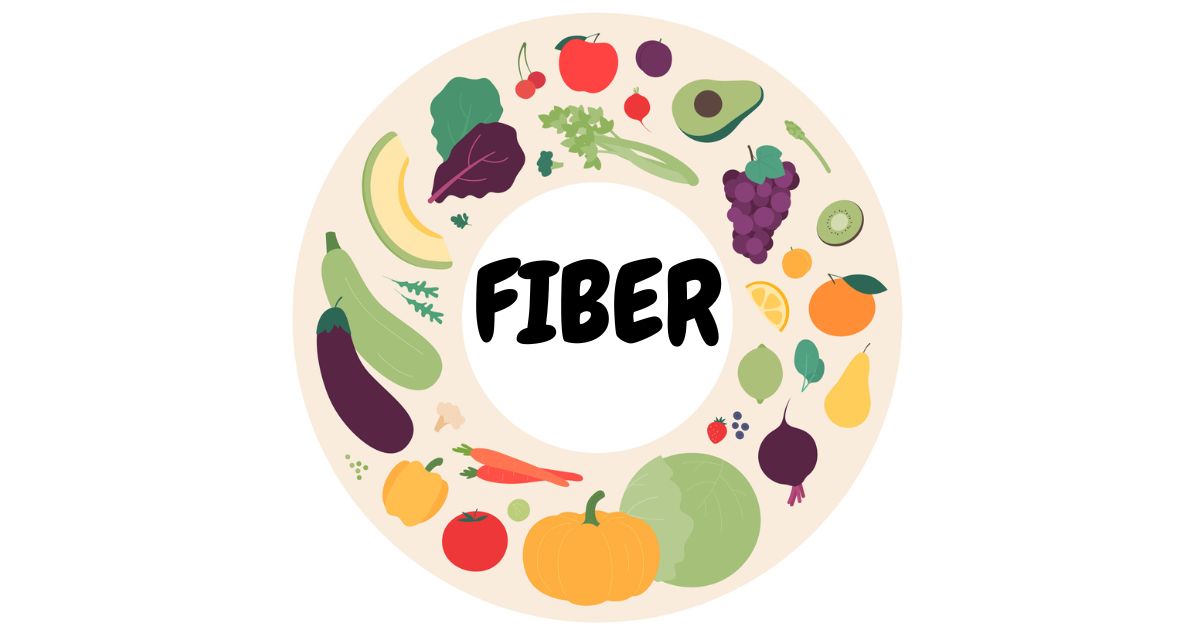Happy Gut Starts With Fiber: Get This Printable List Of High-Fiber Foods Today!
You won’t believe the fiber power in this printable high-fiber foods list! I have also listed my to favorite 12 high-fiber foods and saved the best for last, so make sure to read to the end to discover the ultimate fiber-packed food. With over 34 grams of fiber per just one cup, this last food will keep your digestion running smoothly all day.
If it is fiber you are after, you don’t want to miss out on this list of high-fiber foods!
Printable List of High-Fiber Foods pdf
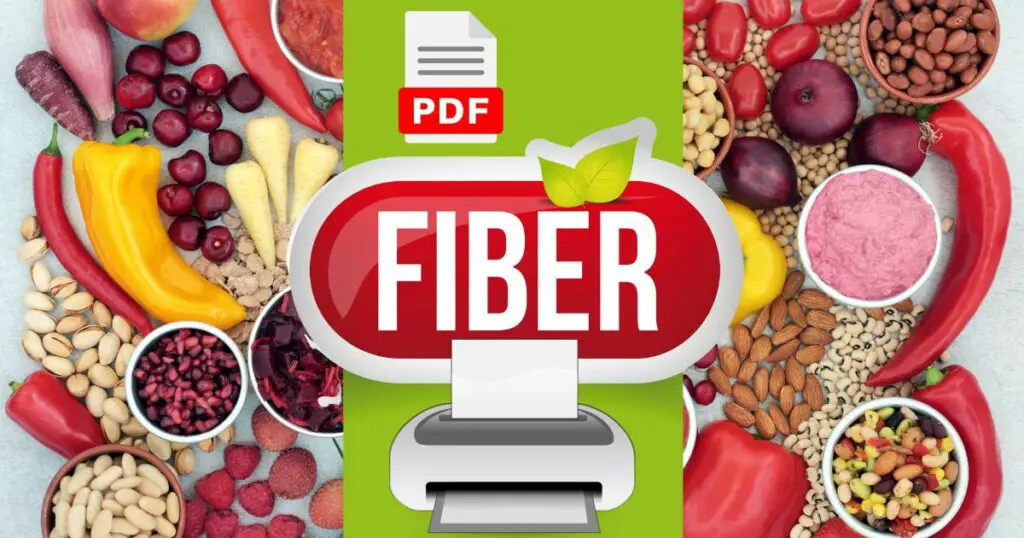
Get our free printable list of high-fiber foods! You can download the pdf file here and then print it out for an easy reference on 54 delicious and nutritious options, including fruits, vegetable nuts, seeds, legumes, and grains, to keep your digestion running smoothly.
The Top 12 High-Fiber Foods
| Food Item | Fiber Content In Grams |
|---|---|
| Brussels sprouts | 4 g of fiber per cup |
| Sweet potato | 4 g of fiber per medium-sized potato |
| Popcorn | 4 g of fiber per cup |
| Broccoli | 5 g of fiber per cup |
| Artichoke | 8 g of fiber per medium artichoke |
| Avocado | 10 g of fiber per peeled avocado |
| Almonds | 10 g of fiber per cup |
| Oat bran | 15 g of fiber per cup |
| Legumes | 15-20 g of fiber per cup |
| Passion fruit | 20+ g of fiber per cup |
| Bulgur | 24 g of fiber per cup |
| Chia seeds | 34 g of fiber per cup |
1. Brussels Sprouts: A Surprising High-Fiber Vegetable
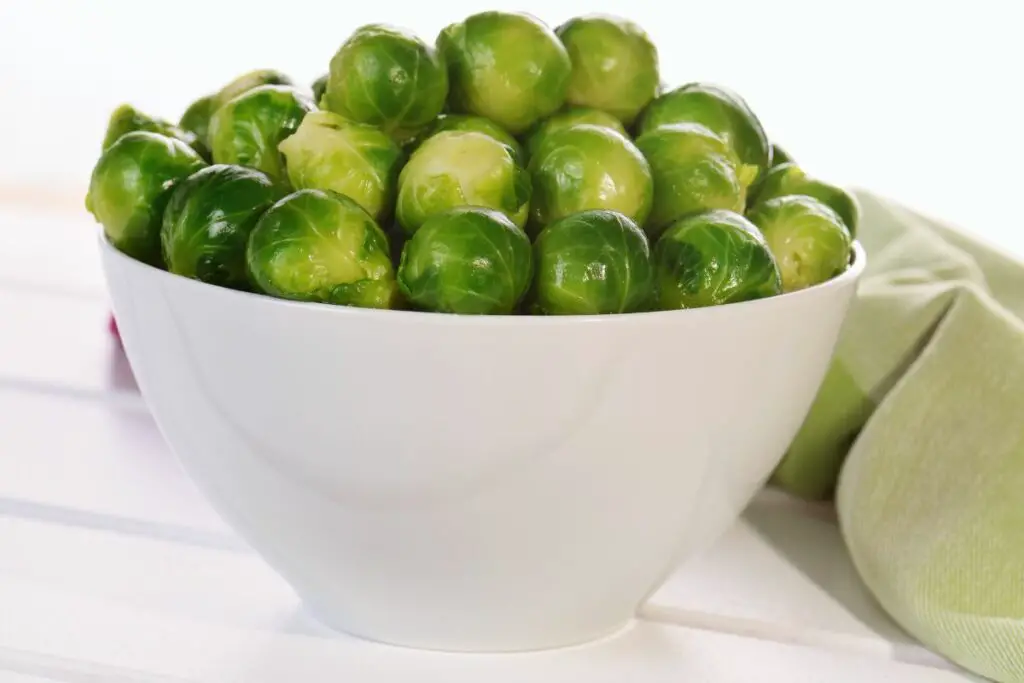
Let’s start with Brussels sprouts, which contain around 4 grams of fiber per cup when cooked. These tiny cabbage-like vegetables may have a bad reputation, but they’re actually quite tasty when cooked properly.
2. Sweet Potatoes: A Tasty Source of Fiber
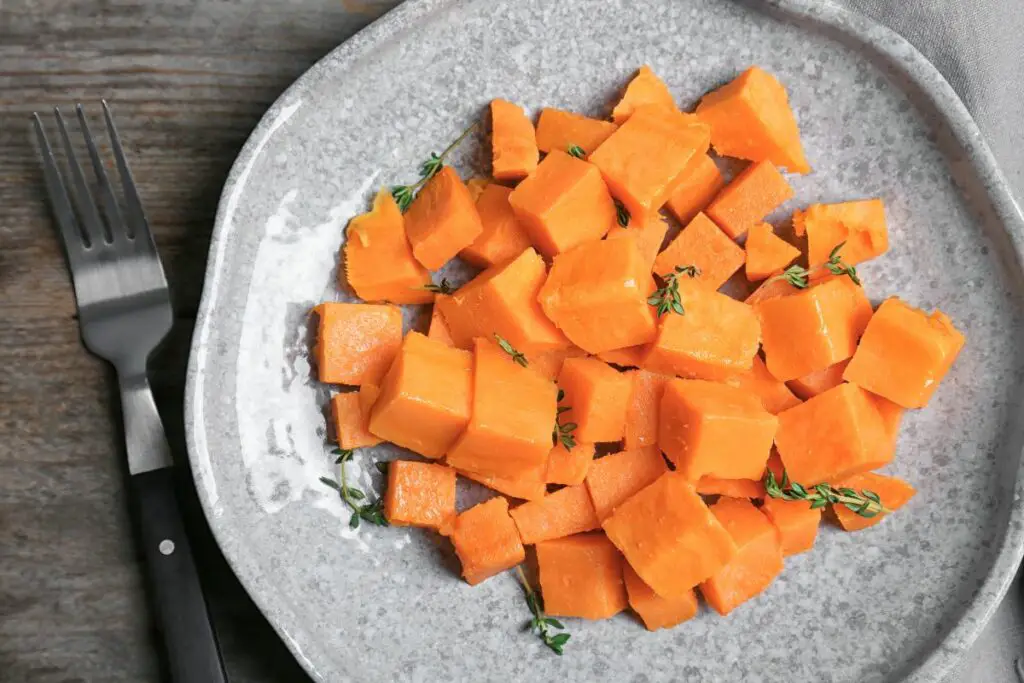
Next up is the sweet potato, which contains around 4 grams of fiber per medium-sized potato. These tasty spuds are also a good source of vitamins A and C.
Read Also: Can You Eat Raw Sweet Potato? (Benefits And Risks).
3. Popcorn: A Surprisingly Fiber-Packed Snack

Popcorn may not be the first thing you think of when it comes to fiber, but one cup contains around 4 grams of fiber. Can you imagine then how much fiber you would get after finishing a massive cinema-size bucket of popcorn?
Here is how to make movie theater popcorn!
4. Broccoli: A Crunchy and Fiber-Rich Green
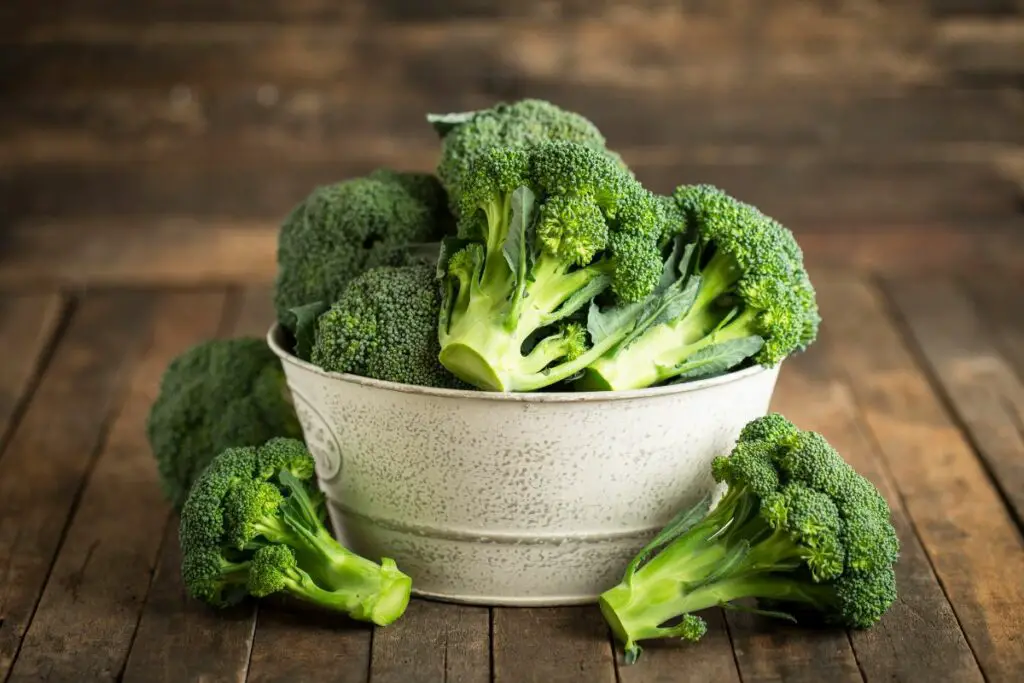
Broccoli is another great high-fiber option, with one cup containing around 5 grams of fiber when cooked. This crunchy green veggie is also a good source of vitamins and minerals.
Must Read: How Much Broccoli To Eat Per Day? (How much is too much?)
5. Artichokes: A Unique and High-Fiber Vegetable

Artichokes may take a little extra effort to prepare, but they’re worth it for their high fiber content and unique flavor. One medium artichoke contains about 8 grams of fiber.
6. Avocado: A Creamy and Fiber-Packed Fruit
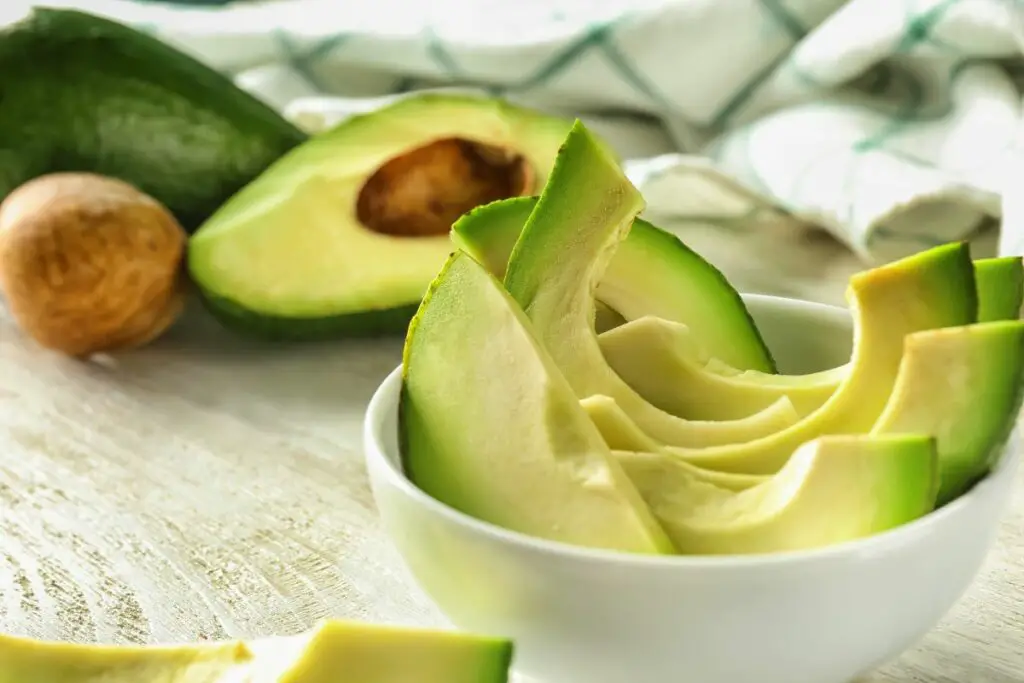
Avocado is a creamy fruit that contains approximately 10 grams of fiber per peeled avocado. This tasty fruit is a great addition to salads, sandwiches, or even mashed onto toast.
Here are 12 Sweet Potato And Avocado Recipes That You Will Like!
7. Almonds: A Crunchy and Nutritious High-Fiber Nut
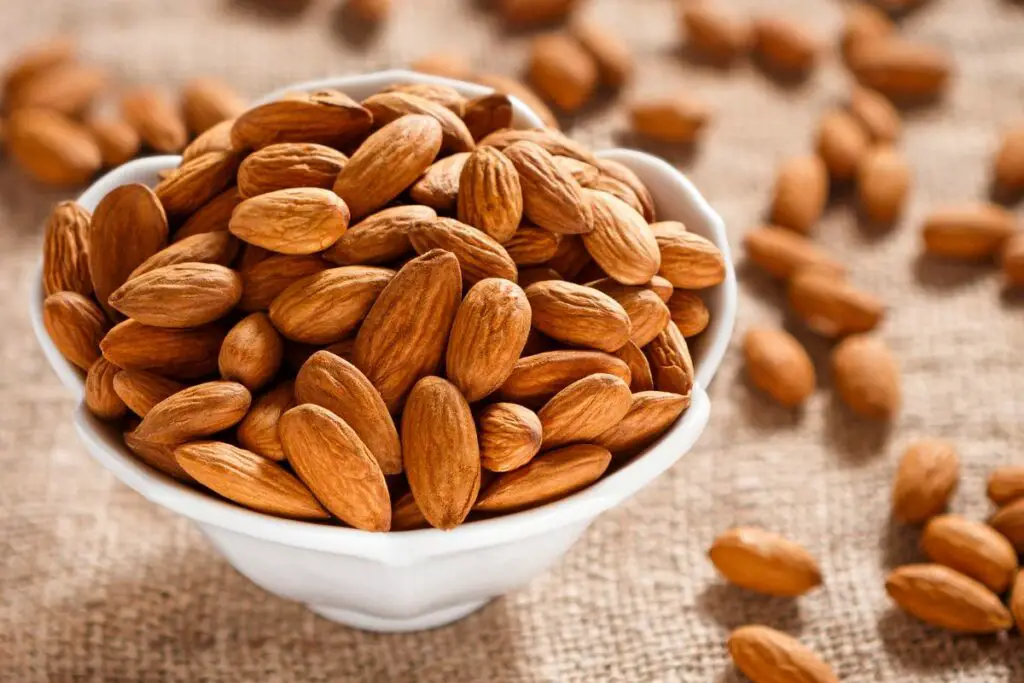
Almonds are a crunchy and tasty nut that contains a respectable 10 grams of fiber per cup. These nuts are also a good source of healthy fats.
8. Oat Bran: A Fiber-Packed Breakfast Addition
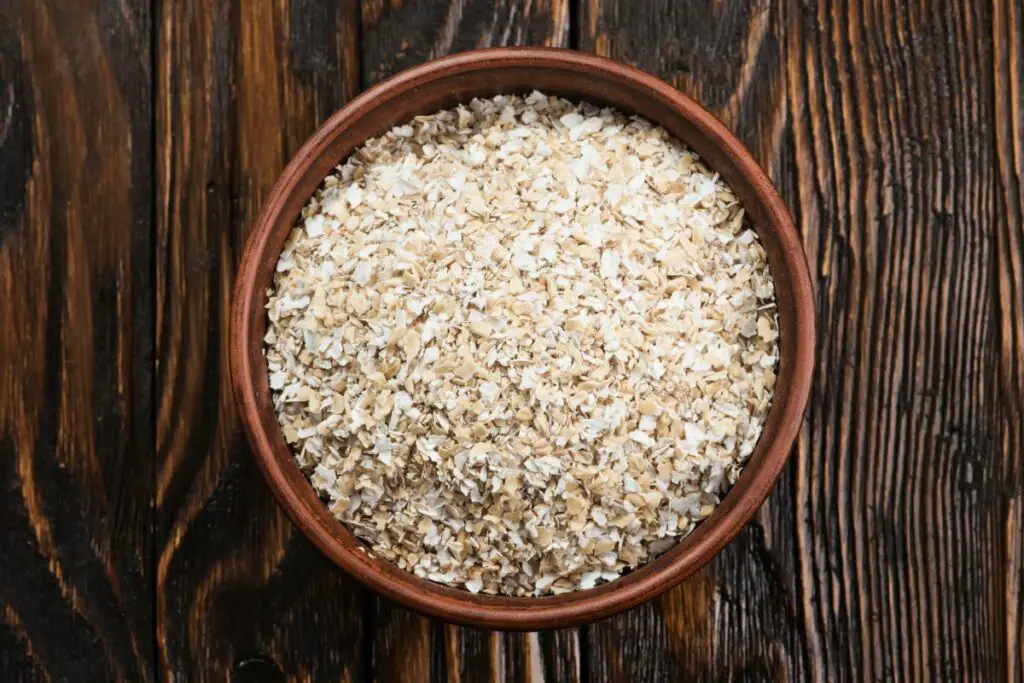
Oat bran is another high-fiber food, with one cup containing 15 grams of dietary fiber. Add it to your morning oatmeal, or use it as a topping for your favorite yogurt.
9. Legumes: A Plant-Based Protein and Fiber Source

Legumes, such as beans or lentils, contain around 15-20 grams of fiber per cup when cooked. These tasty little beans are a great source of plant-based protein as well.
Check Out These 9 Best Slow Cooker Split Pea Soup Recipes With Ham And Potatoes.
10. Passion Fruit: An Exotic and Fiber-Rich Fruit

Passion Fruit is an exotic fruit that is an outstanding source of dietary fiber, with just one cup containing over 20 grams of fiber. Try adding it to your morning smoothie, or enjoy it as a refreshing snack.
11. Bulgur: A High-Fiber Substitute for Rice
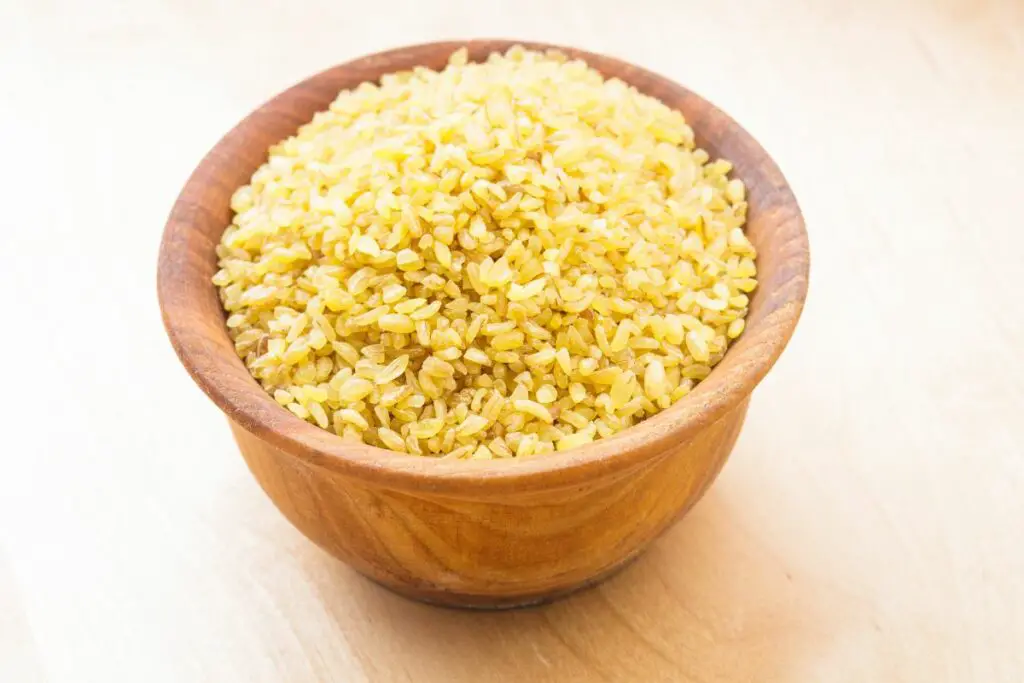
Bulgur, or cracked wheat, is a top high-fiber food that contains an impressive 24 grams of fiber per cup. Try using it as a substitute for rice in your favorite dishes.
12. Chia Seeds: The Ultimate Fiber-Packed Food
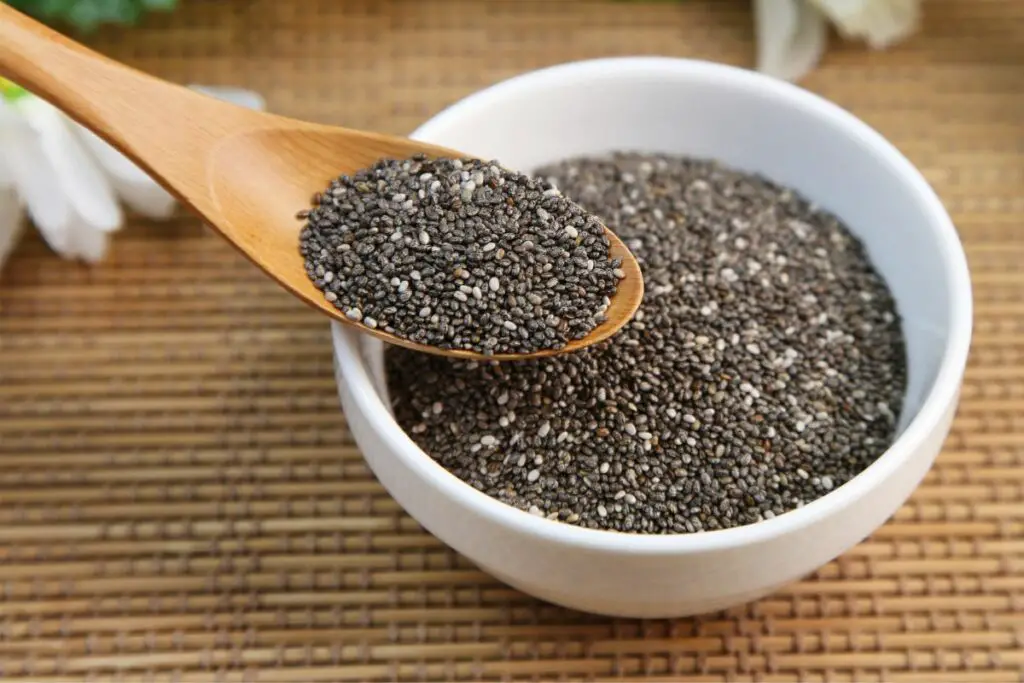
And finally, Chia Seeds top our list with a staggering 34 grams of fiber per cup. That’s more than double the daily recommended intake for adults!
So there you have it, a list of nutritious high-fiber foods.
Also, check out my other article about foods that contain the least or no fiber. Are you eating any of these zero-fiber foods? 19 Foods That Are Super Low In Fiber.
Difference Between Soluble And Insoluble Fibre
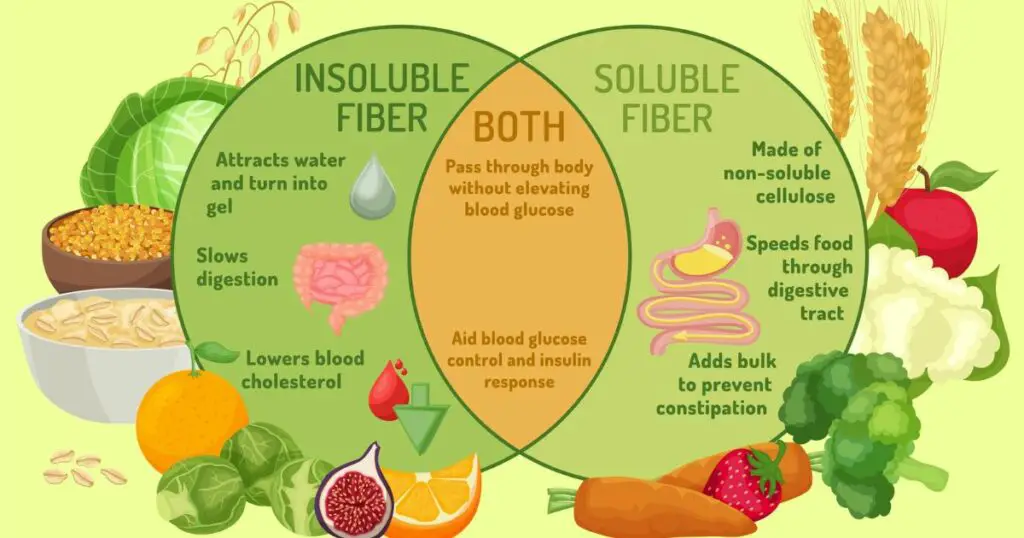
Fiber is a type of carbohydrate that’s really important for our body’s digestion. It comes in two different types: soluble and insoluble.
Soluble fiber is like a sponge that soaks up water and turns into a gel-like substance in your stomach. This type of fiber is found in foods like oats, beans, lentils, chia seeds, flax seeds, Brussels sprouts, sweet potatoes, avocados, broccoli, and some fruits like apples and pears.
Soluble fiber helps keep our digestive system healthy by regulating blood sugar levels, lowering cholesterol, and keeping us feeling full.
Insoluble fiber is like a broom that helps sweep out our intestines. It doesn’t dissolve in water and is found in foods like whole wheat bread, root vegetables, nuts, and fruits with a lot of seeds.
Insoluble fiber helps keep us regular by adding bulk to our stool and promoting bowel movements.
Both types of fiber are important for our overall health, and we should aim to eat a variety of foods that contain both. So, don’t forget to eat your fruits, veggies, whole grains, and legumes to get all the benefits of fiber!
Remember that most fruits and vegetables contain both soluble and insoluble fiber and that a diet rich in a variety of high-fiber foods is the best way to ensure adequate intake of both types of fiber.
Frequently Asked Questions About Fiber

Looking for answers to your fiber-related questions? Check out our frequently asked questions section for the most popular fiber-related inquiries.
What is recommended amount of fiber per day?
The American Heart Association recommends that adults consume 25-30 grams of fiber per day from various food sources rather than relying on supplements. However, it’s important to note that individual fiber needs may vary depending on factors such as age, sex, and activity level. It’s always a good idea to consult with a healthcare provider or registered dietitian to determine the appropriate amount of fiber for your individual needs.
What is a good amount of fiber per serving?
A good amount of fiber per serving is typically around 3-5 grams. This amount can vary depending on the type of food and serving size, but it’s generally recommended to aim for foods that contain at least 3 grams of fiber per serving. Remember that some high-fiber foods, such as legumes and seeds, can contain much higher amounts of fiber per serving, ranging from 5-15 grams or more.
Is 20 grams of fiber in one meal too much?
Eating 20 grams of fiber in one meal may be too much for some people, especially if they are not used to eating high-fiber foods. Consuming too much fiber at once can cause digestive discomforts such as bloating, gas, and abdominal pain. It is recommended to spread your fiber intake throughout the day by incorporating high-fiber foods into each meal and snack. However, individual fiber needs may vary, and adjusting your fiber intake according to your body’s tolerance is important. If you experience persistent digestive symptoms or have concerns about your fiber intake, it’s best to seek advice from a healthcare provider or registered dietitian.
Why is fiber good for digestion?
Fiber is good for digestion because it adds bulk to stool, promotes regular bowel movements, and supports the growth of beneficial bacteria in the gut. It also helps control appetite and supports healthy weight management. Consuming an adequate amount of fiber is essential for maintaining good digestive health and overall well-being.
Is eating fiber good for weight loss?
Yes, eating fiber can be good for weight loss. It helps you feel fuller for longer, regulates blood sugar levels, and can lead to significant weight loss and improvements in body composition. However, it’s important to consume a balanced diet and make other dietary changes in addition to adequate fiber intake for optimal health and weight loss.
Does cooking vegetables reduce fiber?
While general cooking does not have a significant impact on fiber content, foods that are cooked for long periods of time or at high temperatures can experience a reduction in fiber. Soluble fiber is generally less affected by cooking than insoluble fiber. Certain cooking methods, such as boiling or steaming, can help retain the fiber content of some foods. The effect of cooking on fiber content is influenced by the type of fiber and the cooking method employed.
In Summary
So, we’ve learned that fiber is essential for maintaining a healthy diet, aiding in digestion, and even helping with weight loss. The recommended daily intake for adults is 25-30 grams, and luckily there are many delicious high-fiber food options to choose from!
Some of the best high-fiber foods include Brussels sprouts, sweet potatoes, broccoli, and artichokes. Passion fruit and chia seeds are also great options for those with a sweet tooth. Download the PDF file at the beginning of the article to get the full printable list of high-fiber foods.
It’s also important to note that cooking won’t significantly reduce the fiber content of foods, but overcooking can. And while soluble fiber is less affected by cooking, some cooking methods, such as boiling or steaming, can help preserve fiber content.
So, there you have it! Incorporating high-fiber foods into your diet can help improve digestion and overall health. Plus, they’re delicious and easy to find.
